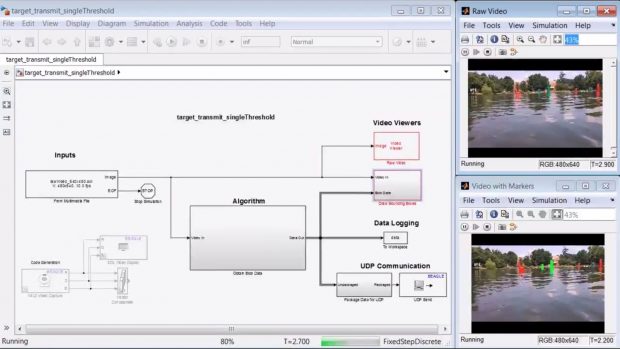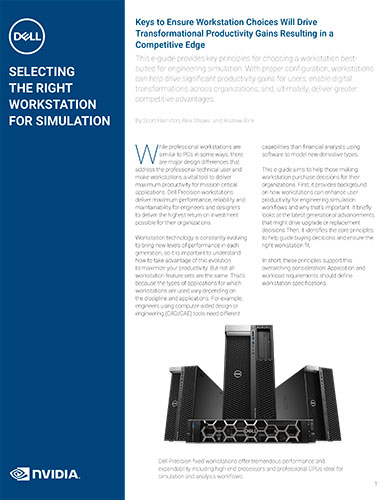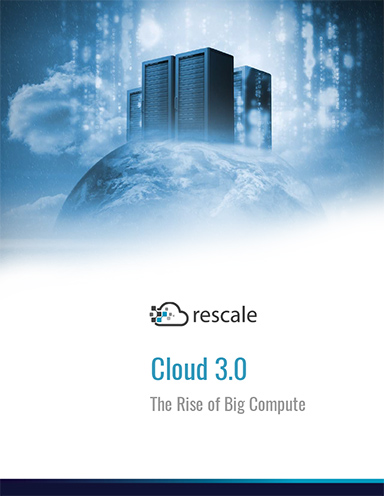Industry Needs Student Competitions to Define—and Design—the Robots of Tomorrow
September 15, 2017
By Connell D’Souza
Student competitions are playing a mission-critical role in the rise of the robotics industry by fusing deep learning with computer vision, image processing, and a thorough understanding of control systems.
Demand from the industrial Internet of Things and automotive, electronics and military applications is expected to fuel double-digit growth for the robotics sector through 2019. At that time, nearly 2.6 million industrial robots will be working autonomously or alongside their human counterparts in factories around the globe, according to the International Federation of Robotics in its 2016 World Robotics Report.
Unfortunately, few engineers or researchers working in industry today have mastered all the disciplines required to build an autonomous robot—and that has potentially negative ramifications for a manufacturing sector already beset by retiring baby boomers. A 2015 survey by Deloitte Consulting and the Manufacturing Institute found that 82% of executives polled believed a manufacturing skills gap will impact their ability to meet customer demand, and 78% believed it will impact their ability to implement new technologies and increase productivity.
To close that gap, student robotics competitions are emerging as a kind of living laboratory. For the first time, students have a forum for combining computer vision and control engineering to create AI-powered cyber-physical systems for factory automation, homeland defense and other functions.
 Students from across academia are provided access to tools like MATLAB to help in the designing and building of their autonomous robot.
Students from across academia are provided access to tools like MATLAB to help in the designing and building of their autonomous robot.MathWorks is among several private and government organizations sponsoring RoboNation, a community founded by the Association for Unmanned Vehicle Systems International (AUVSI) that runs a series of competitions for the design of maritime, submersible and aerial drones. RoboNation’s seven competitions attract students from world-leading engineering schools and draw additional support from top organizations and agencies like the U.S. Office of Naval Research. Students from across academia are provided access to tools like MATLAB to help in the designing and building of their autonomous robot.
Taking Research out of the Classroom
Students competing in RoboNation competitions are given the opportunity to work on control systems, computer vision and deep learning—also known as cyber-physical systems—and learn how they interact with one another. This kind of interaction within student competitions is a rarity, making RoboNation competitions a valuable hands-on learning experience for students.
Research in academia is not for everyone, many students (myself included), do not like being locked up in a lab in isolation reading through endless journal papers. Student competitions give students the opportunity to work in a team, on a time-bound project, with a clear deliverable akin to the industry, while still offering them the chance to perform literature reviews, experiments and testing much like traditional research. This gives an opportunity to many more students to gain quality hands-on experience with the latest technological capabilities.
The RoboNation student competitions require students to design and build autonomous robots that can address real-world mission-critical applications. The seven competitions span across air, land and maritime. For example, in RoboSub, a maritime competition, students design and build autonomous robotic submarines. They are then tasked with completing a series of visual- and acoustic-based tasks that simulate the work required in industry robotics subs for many facets of underwater activity like search-and-rescue missions. The competition simulates an environment where an autonomous craft is sent out to search for a downed aircraft in the ocean.
Whereas, in the air competition, Student Unmanned Air Systems (SUAS), students research, design, integrate, and demonstrate an unmanned aerial system capable of autonomous flight and navigation, remote imaging and communication, and execution of a specific set of tasks including sensing, detecting, and avoiding stationary and moving obstacles.
The research from these tasks could potentially feed into everyday search-and-rescue air operations. Drones, for example, could identify stranded hikers, drop off water and medication, and then report back their location to rescuers.
Within each competition, students experience expected and unexpected real-world challenges that need to be taken into account when designing and building an autonomous system. Vision, perception and control work simultaneously in an autonomous system, but with slightly different purposes. Vision and perception systems’ goal is to understand the vehicle’s environment, while control systems’ focus is on helping the vehicle interact with its surroundings. Consequently, the control system relies on the vision and perception systems to accurately identify its surroundings, feeding the data generated back into the control systems, so that a decision as to the next course of action can be made.
During RoboSub 2017, the weather played a significant role where, throughout most of the competition, there was an overcast, affecting the lighting conditions. The teams, as a result, had their computer vision systems tuned for these conditions. When the sun was out on the day of the finals, this changed the lighting conditions and teams had to scramble to retune their computer vision modules so that their robosubs were detecting the right objects. As in the real-world, the students had to adjust to a common and unexpected problem—changing weather patterns.
The real-world and project-based learning environment offered within these RoboNation competitions is providing the next generation of engineers with valuable, working knowledge of autonomous technology—helping to close the skills gap—as well as critical research knowledge, which could have a potential immediate impact on today’s industry.
More Info
Association for Unmanned Vehicle Systems International
Connell D’Souza is Technical Evangelist—Student Competitions of MathWorks.
Subscribe to our FREE magazine, FREE email newsletters or both!






